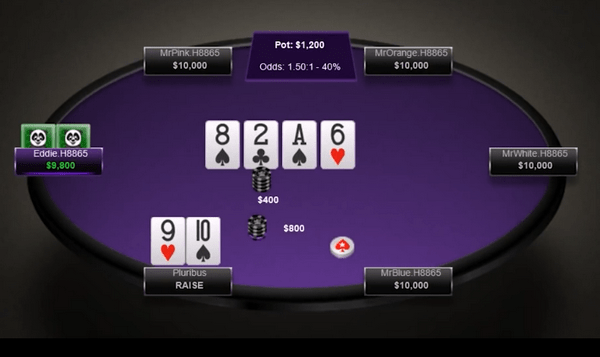There is a quality that separates high rollers from low-stakes players, and that quality is greed. Low-limit players are very reluctant to play for a stack without the nuts or a combination close to it, while for most high rollers, playing for a stack is as easy as drinking a glass of water. High rollers understand that very strong combinations are rare, so when you are lucky enough to get them, you should make the most of them.
Is it possible to learn this from them? It turns out that the solver also often shows surprising greed. After analyzing its game, we will learn how to play big pots as efficiently as possible.
Drive Hud 2 has many ways to analyze statistics, one of which is the variety of bet sizings. Let's look at the frequency with which Pluribus used bets of different sizes on the flop, turn, and river. Our sample includes continuation bets, feeler bets, and delayed continuation bets.
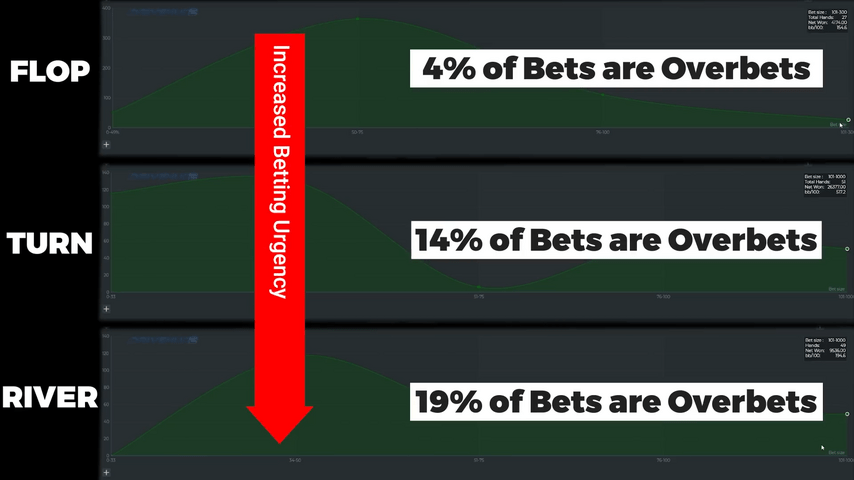
As you can see, Pluribus overbets on every street, but the frequency increases from flop to river.
Remember Ariel's basic strategy? Her sizing did not exceed 100% of the bank.
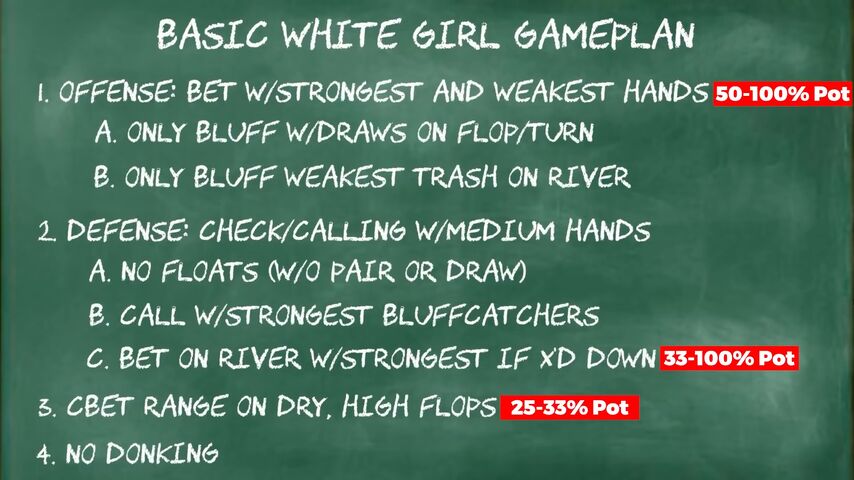
At the initial stage, we wanted to reduce variance. But now that Ariel has already played about six thousand hands on PokerStars, it’s time to remove these shackles.

Although the sample is small, it is striking that with a near-zero win rate, Ariel wins a lot at the showdown and loses a lot without the showdown. This in itself is not a problem, but it can signal an imperfect choice of sizing. She may be betting too small with strong hands, causing her opponents to call too often. What's wrong with that, you ask? Well, of course, we want our bets to be called by weaker hands, but there is a limit to this logic. After all, if we start always betting 1bb with the nuts, we will almost always get called, but our expectation will drop.
The world's best players and modern top-of-the-range solvers tend to play for the stack. They make big bets and overbets. This sometimes leads to opponents throwing away hands that could have called smaller bets. But there is nothing wrong with this if we balance the draws with bluffs.
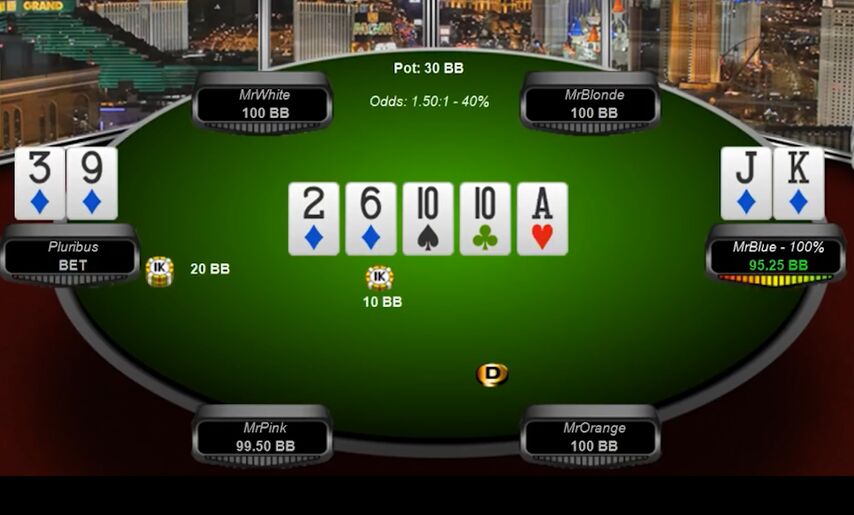
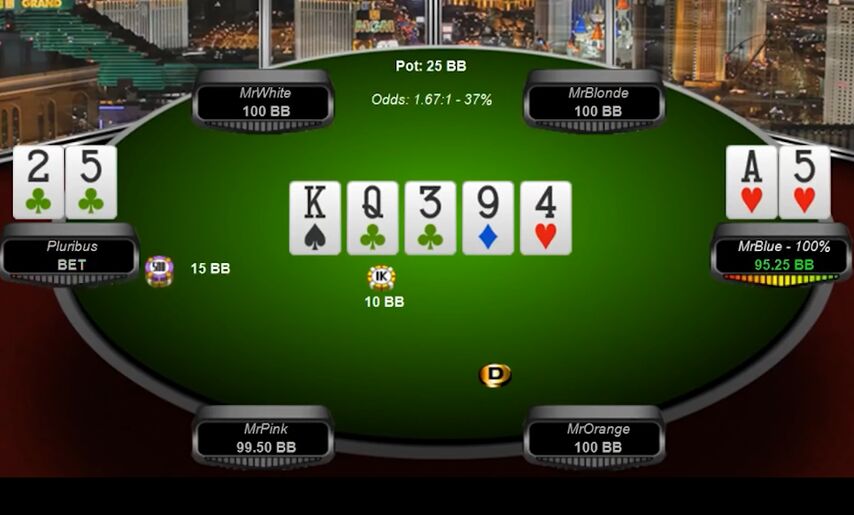
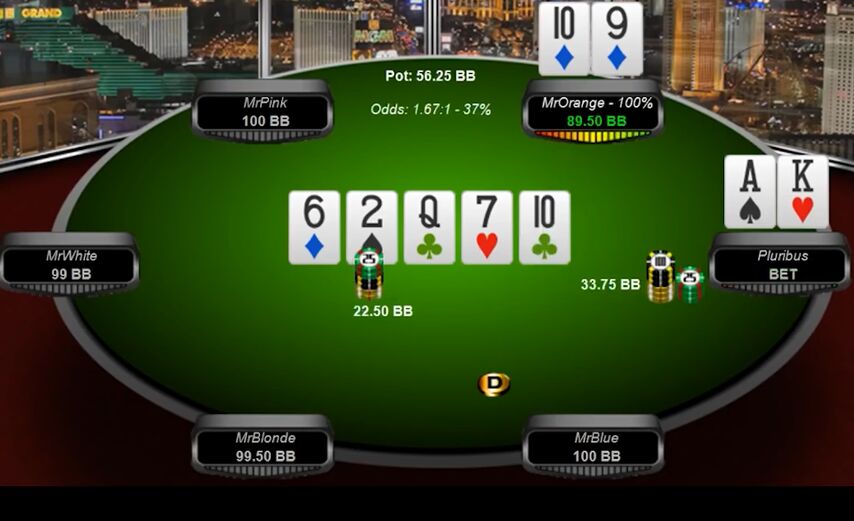
When should we overbet? Choosing the optimal sizing is one of the most difficult aspects of poker strategy, but the situations in which overbets are often encountered have something in common. First, the betting street: In the chart above, we saw that the frequency of overbet increases from flop to river. The reason is obvious: on the flop, we have two more streets of betting left, but the closer we get to the showdown, the stronger our desire to win as much as possible right now. Secondly, SPR, stack to pot ratio. Pluribus made almost all of its overbets in single-raised pots. In 3-bet pots, there is usually no need for overbets, since you can play for your stack by betting smaller amounts.
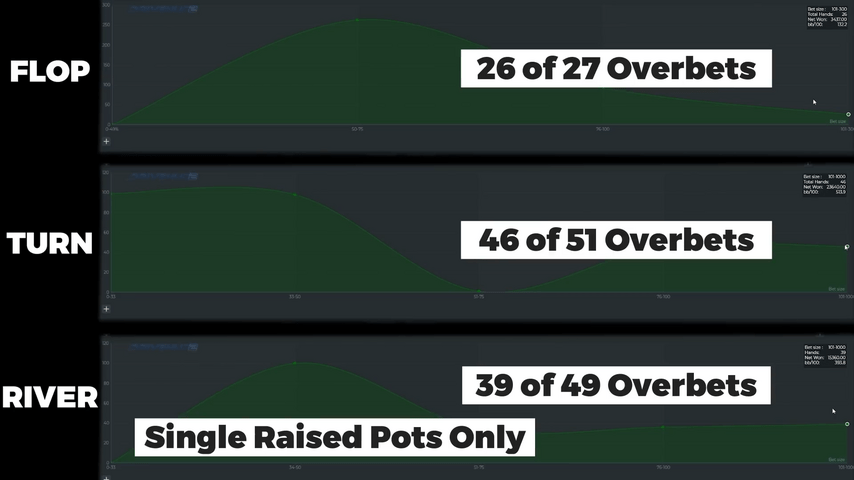
Thirdly, the main factor that triggers the overbetting program is how often your range lines up with the strongest combinations.
Let's look at one of the Pluribus hands as an example. From the second position it opened and received a call from the player on the button. On the flop Pluribus bet half the pot and called again. On the turn Pluribus continued to overbet two pots and got a fold.
According to GTOX, the player in second position should overbet with more than 30% of his range here.
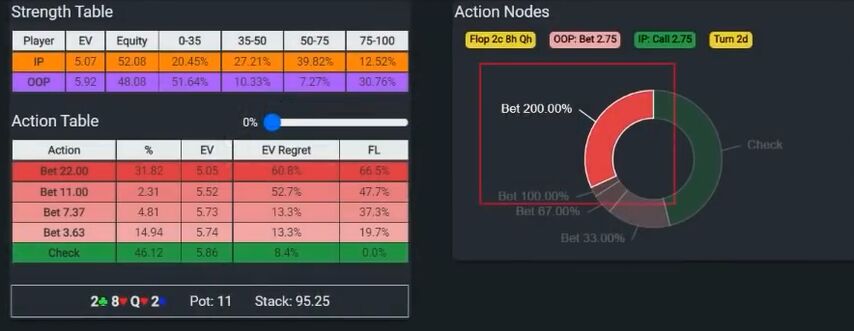
This is because he has significantly more hands with 70% equity, 80% equity, and 90% equity, because there is very little in the button's range and no and .
In the next hand "Pluribus" with in the small blind called the button's raise. The flop went check-check. The turn came the , Pluribus made a bet of two pots and achieved a fold.
Solver recommends overbetting with this size from 25% of the range. Although the button has an advantage in terms of the number of combinations of overpairs and sets, the preflop calling range in the small blind is very narrow, and the proportion of nuts in it is higher.
In the last hand, Pluribus raised from second position with , the big blind called. The flop was followed by a continuation bet of 50% of the pot and a call. Turn – . Pluribus bet two pots for the second barrel after the opponent's check.
Once again, the solver points out that Pluribus has a large advantage in the strongest part of the range and recommends overbetting with 25% of all hands.
Summarizing the information received, we have developed a fairly simple overbet heuristic that even a beginner can follow.
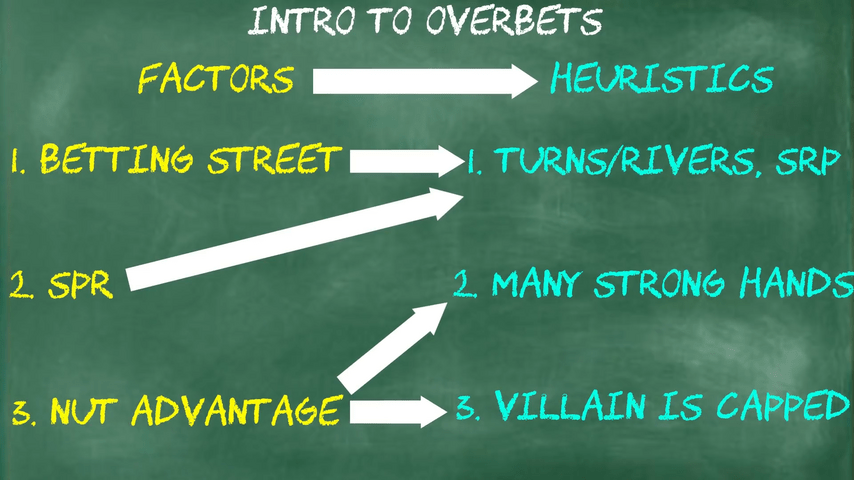
Ariel will only overbet on turns and rivers in single-raised pots. She should also have a lot of strong hands in her range, and her opponent's range should be capped (meaning he's less likely to have the strongest hands).
If all three conditions are met, Ariel should bet 150-200% of the pot on the turn with the strongest combinations and the best draws. After overbetting the turn, she can continue on safe rivers by overbetting from 150% of the pot to all-in with all of her strongest and weakest hands.
Let's look at this heuristic using the example of a hand. Ariel raises with in first position, the big blind calls. Flop – . She c-bet half the pot on the check and calls. Turn – . Ariel bets half the pot and his opponent folds.
According to the solver, this is a good situation for a pot and a half overbet with 40% of the range.
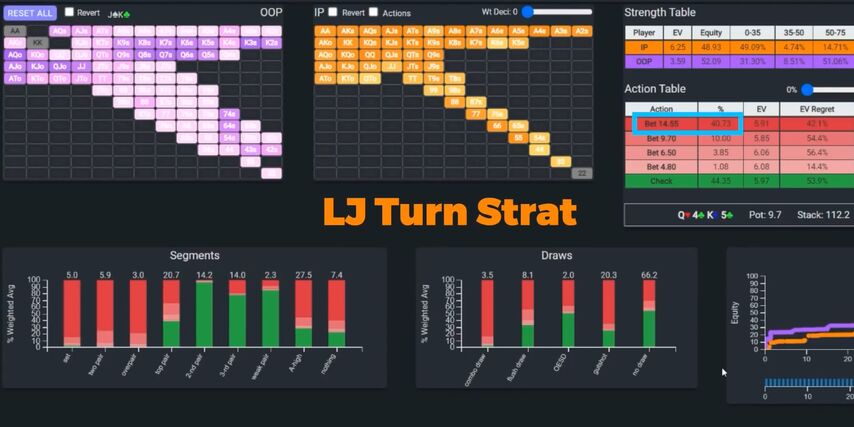
All conditions are met. On the turn, we have many strong combinations – KK, QQ, KQ, AA, AK, KJ. The opponent's range will be limited, since, firstly, he only called preflop, and secondly, he only called a relatively small bet on the flop, where he should raise quite actively with strong hands (almost all sets, most two pairs and part of the top -steam). The absence of a raise on the flop allows us to discount many strong combinations from our opponent. Finally, a blank turn that practically does not strengthen the opponent's range – yes, he has K5s, Q5s, and 54s, but no more. The only cards that are unpleasant for us are straight and flush cards.
As a result, we get a good situation for an overbet on the turn. It remains to figure out which hands should be used to do it.
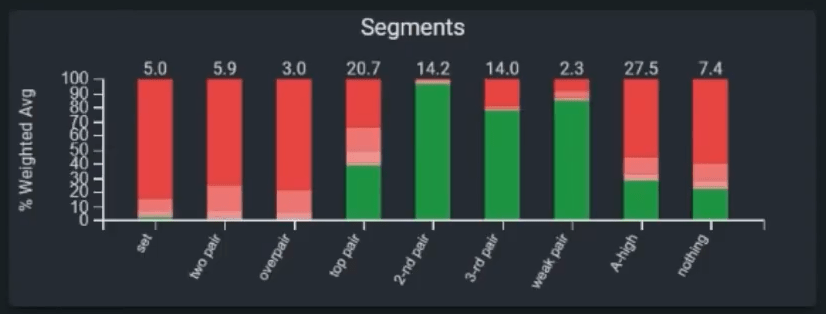
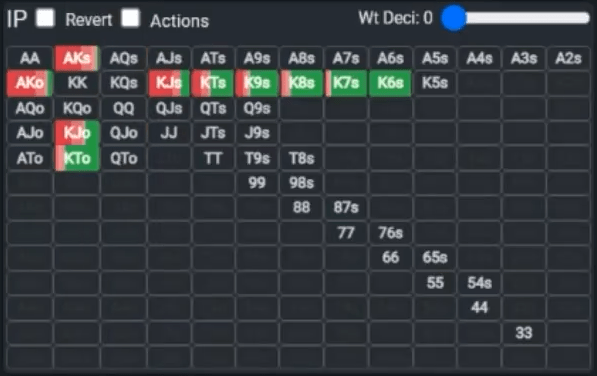
The definition of a hand that is strong enough to want to play for the stack changes noticeably depending on the texture. In our case, the border runs exactly along . However, if a straight or flush hits on the river, the limit will have to be reconsidered. To learn how to determine it, you need to work a lot with the solver on different textures – gradually this will balance your thoughts.
And here are the draws, with which the solver also plays through an overbet.
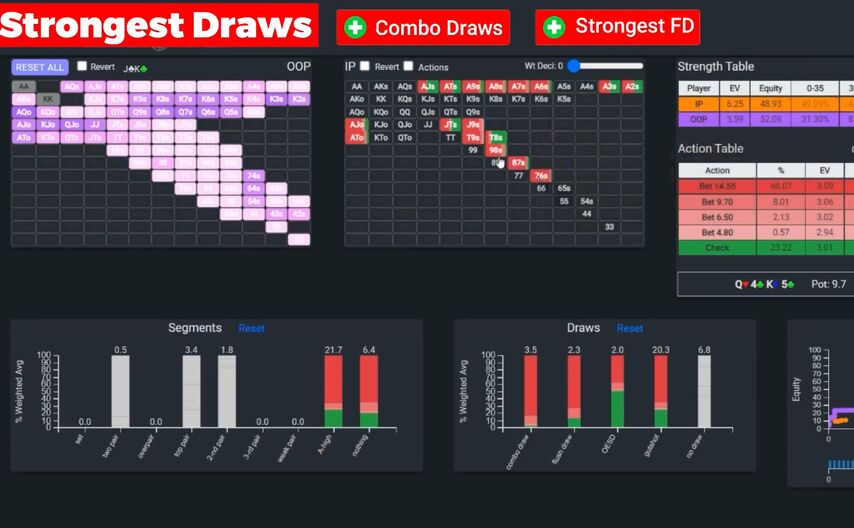
We'll simplify the strategy and only overbet combo draws, top straight draws, and high flush draws. When accelerating the pot to play for stacks, we don't want hands that might be dominant.
What happens when our opponent calls our overbet on the turn? According to the solver, he should be folding 61% of his hands, which means his opponent's range becomes significantly stronger on the river. Even some top pairs fold.
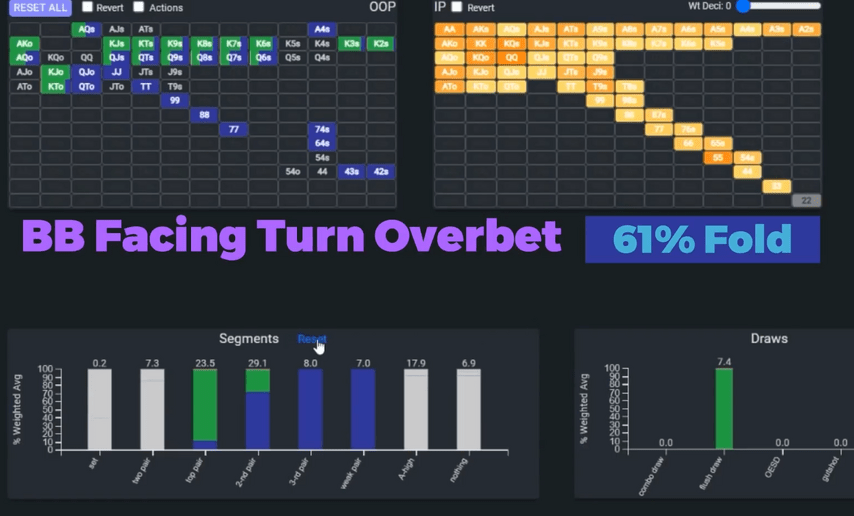
Therefore, on a blank river, let’s say , our top pairs no longer want to overbet, since they simply won’t get enough calls from weaker hands. We'll check 43% of the time and bet a third barrel equal to or slightly less than the size of the pot the rest.
Here's another hand with a different scenario. Ariel opens from second position and gets a call from the cutoff. Flop – . It's a dry board, Ariel bets a quarter of the pot and gets called. Turn – . Ariel bets half the pot again and his opponent folds.
On the turn, the solver prefers to overbet her hand (and another 14% of the range). According to our research, everything is in place: the turn, we have a big advantage on the nuts, the opponent will fold. Solver, however, uses slowplay with and , but we will not adopt this line of his, since our word of the day is greed. We made a very small bet on the flop, there are only two streets of betting ahead, so we need to push the pot as hard as possible with hands that want to play for the stack. For bluffs, we can barrel with and all flush draws to Ace and King.
Let's say we overbet, our opponent called, and on the river it came out . In such a situation, the solver goes all-in with more than 40% of the range. The lower limit of the class of hands for all-in is overpair, but a small part of AQs is also played through pushing.
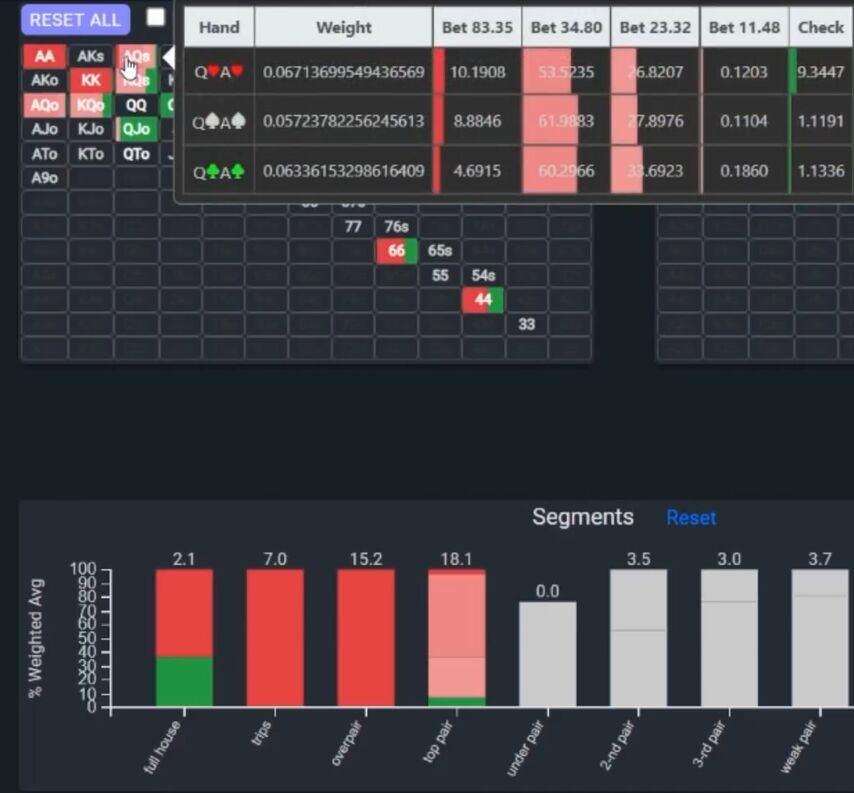
In conclusion, let's look at another hand in which Ariel was not the preflop aggressor. The cutoff raised to 2.5bb, Ariel defended the big blind with . On the flop checked. Turn – . Ariel bet half the pot and her opponent fell.
Surprisingly, the solver with her hand is inclined to overbet 150% of the pot.
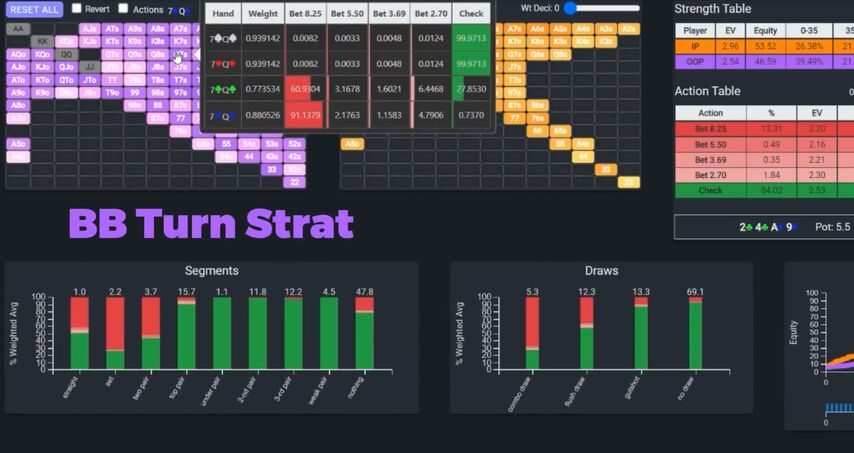
However, this fits well into our conditions. Once raised pot, turn. There are many strong hands in our range, including 53s making a straight, sets of fours, twos and nines, two aces and 42s. They all want to dramatically increase the pot. Our opponent had a chance to c-bet the flop and should have done so with most strong hands, but chose to check, which makes it less likely that he has a strong hand. Turn – rather bland. The opponent may have or , but this card doesn't boost much of his range.
The program shows that the big blind has an advantage in the weight of hands with equity of 80% or higher. The cutoff, of course, has some decent hands on the board, especially top pairs with weak kickers that didn't bet on the flop because they don't need to be protected, but the big blind still has every right to lead. And most straights, sets, and two pairs are overbet.
There are a lot of different draws in our range, so we can't include them all in our overbet range. The number of semi-bluff combinations should be approximately equal to the number of value combinations.
Let's bring the hand to an end. If we bet 150% of the pot, got called, and a blank came out on the river, for example, , the solver goes all-in (that’s four pots!) with sets and straights, and with two pairs he bets two pots.
So in this video, we've developed a simple heuristic to make it easier to use overbet as part of your overall strategy.
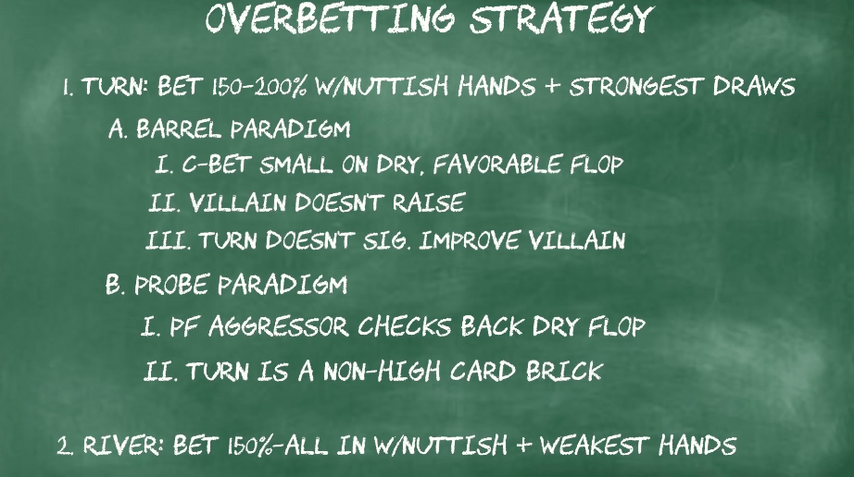
Beginner players may find this style psychologically difficult to get used to as it increases variance and stacks will often fly back and forth. To overcome the psychological barrier, you need to stop thinking about money and the feeling of embarrassment due to expensive mistakes while playing. Instead, develop composure and a perverse pleasure in eating your opponents' chips.
And that's all for today. Stay balanced!
